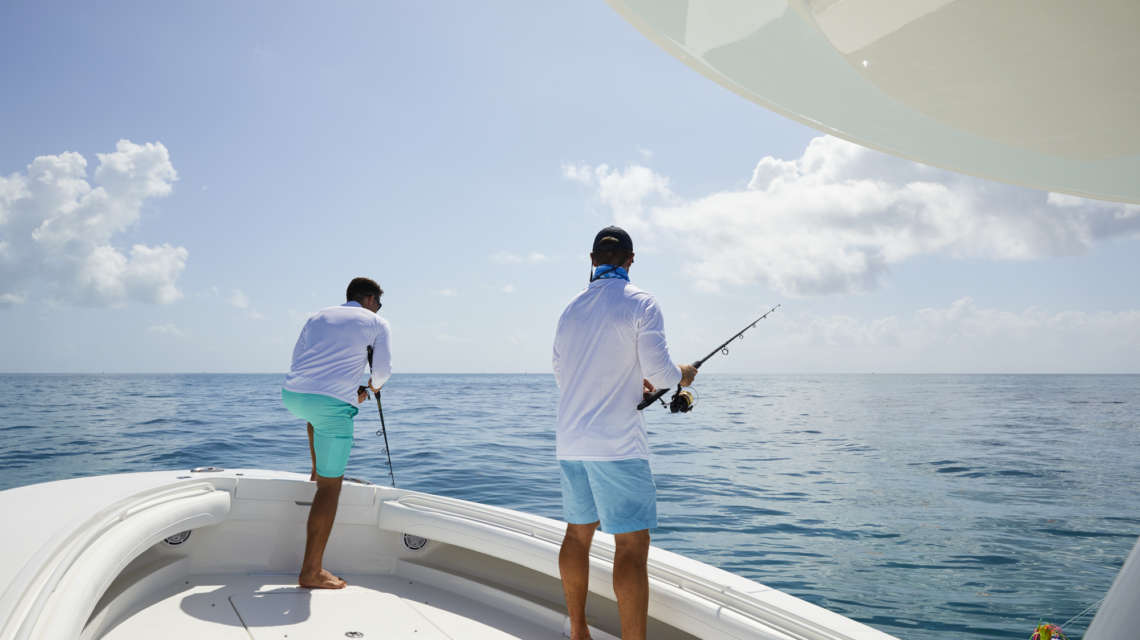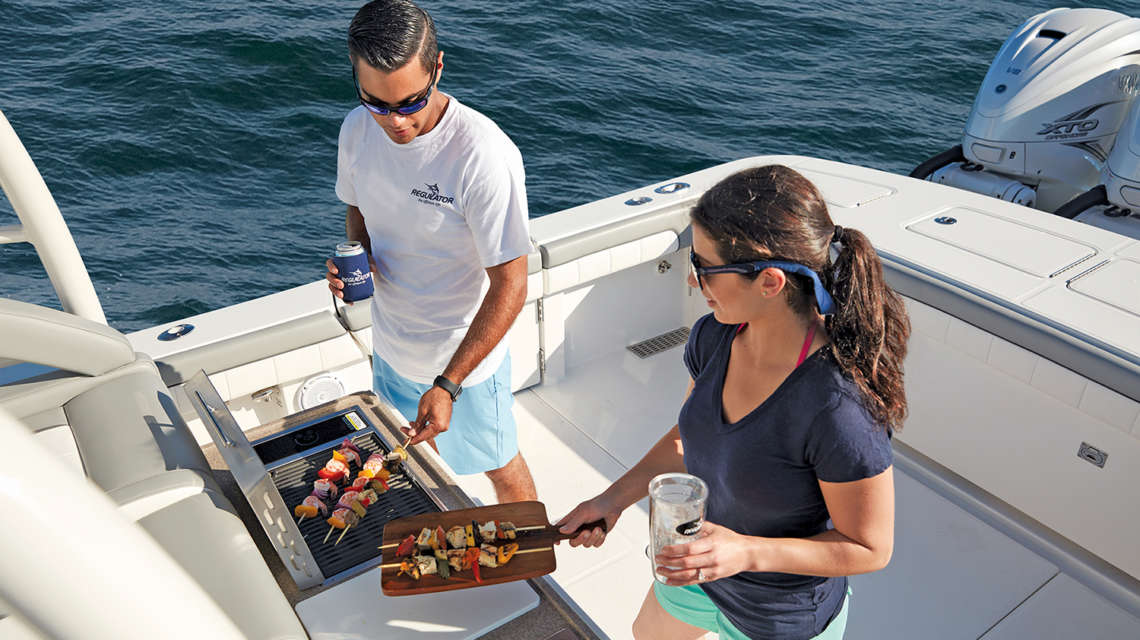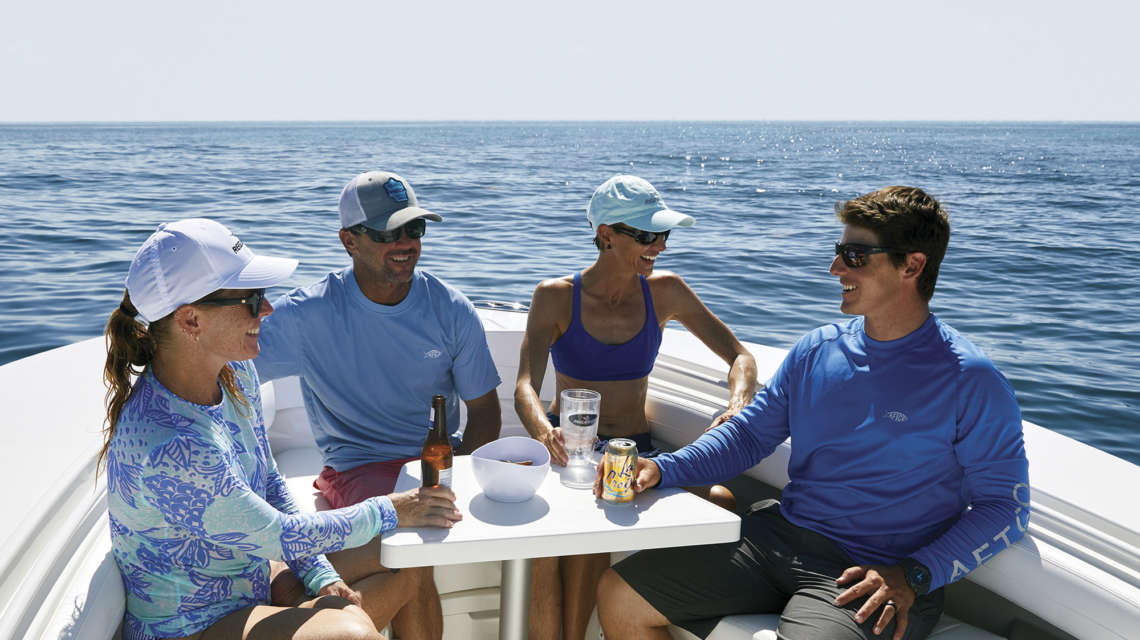From Hook to Cook: Preparing Freshly Caught Fish for the Table

One reason why many of us love to go fishing is the possibility of bringing home something delicious for dinner! Sure, there’s the fun of it: sharing time outdoors with friends and family, getting away from the workaday cares of the world, doing battle with a wily opponent … but the real reward is a nicely grilled filet of something, with some asparagus, mango and pineapple salsa and a delicious cabernet.
As always, to successfully get to the end part, you have to start at the beginning. Assuming you’ve caught something good for dinner, you need to take a few steps to get your dinner safely back to the kitchen or grill.
Bonk, bleed and scale.
Once you’ve caught your fish, you must get it ready to eat. You can take these steps on your boat or put the fish on ice until you get back to the dock and do it there. But most fishermen will dress the fish on board, right after it’s caught. This involved three steps. First, bonk the fish. This is done with a sharp blow to the head, between the eyes, with a fish bat or a special tool.
Next, bleed the fish by cutting through the gills on both sides, from the bottom up. Then, as the blood begins to run, dunk the fish in the water to drain.
Finally, if you are working with a saltwater fish that cooks better by scaling, scale the fish with your knife or a scaling tool. Work from tail back toward the head to remove the layer of scales, leaving the nice, clean flesh underneath. You can leave the scales on for most types of fish during your preferred cooking method and the skin will fall off easily and reveal a nice filet.
You can also remove the innards of the fish at this point, or leave the fish whole and on ice until you get back to the dock and are ready to filet or butcher the flesh.
Ice is nice.
You’ll want to bring out the cooler, next. Hopefully one full of nice clean ice.
Lay the fish down side-by-side, so that all of the flesh is exposed to the ice.
Melted water from the ice can water down the flavor of your catch. Savvy captains like to pour a cup or two of ice cream or kosher salt into the ice cooler. The salt will reduce the coldness (to around 28°) without solidifying the ice. And the firm, cooled flesh will be easier to filet back at the dock.
Filet technique.
Everyone learns how to filet in different ways, depending on who teaches them! Here’s the simplest method. This assumes you’ve gutted the fish, removed the head and gills, and washed out inside the body with cold fresh water.
- Working from the top (head) of the fish, insert your filet knife into the cavity until the blade meets the spine, and slide the knife towards the tail.
- Make a shallow cut along the back, where the skin is toughest, then slice deeply along the spine.
- With the blade flush against the spine, slice beneath the fish from tip to tail, separating the filet as you work.
- Detach the filet at the tail with a final cut. Wash with cold water and pat dry. Repeat for the other side of the fish.
That’s all it takes! You can now cook your filets in any manner you like, or put them in freezer bags to store for later. You can use a kitchen vacuum sealer for an air-tight package, or “glaze” the fish. Put a metal baking pan in the freezer, dip your fish in salt water and put them in the pan in the freezer. Wait about five minutes and repeat the dip-and-freeze steps. Soon, your fish will develop an icy glaze all over. Put them in freezer bags and store. The ice glaze will help maintain the fish’s moisture and tenderness after it’s been in the freezer.
Grill, bake or fry?

Different species cook better in different ways.
Thin-fileted fish, like flounder (fluke), can fall apart on the grill (unless you use a cage-like fish press). Thicker-fleshed species, such as striped bass, mackerel or bluefish, are more oily and do better on the grill, soaking up the smoky flavors.
Flounder, trout and tripletail are best cooked in the oven. Add a pat of butter and lots of salt and pepper and cook them low and slow: say 250° for 40 or 50 minutes.
Neutral and oily fish are good for deep-frying. Clean the filets, dip in egg wash, coat with dry batter or crumbs and fry.
A cast iron skillet is great for searing filets. Add some olive oil, and then the fish, skin-side down. Once the skin side is crispy and brown, carefully flip over and cook the other side for a few minutes.
Want recipes?

You could fill an entire bookshelf with cookbooks telling you how to cook various kinds of fish, and the things that go great with them. We found some entertaining and instructive YouTube videos on the subject.
Try Paul Breheny’s The Hook and The Cook series. Sample here.
Luke Nichols has a series of fishing videos on his Catfish and Carp site, many of which offer delicious recipes for preparing fish. Check it out here.
We’re sure there are many more. If you have a favorite fish recipe, please share it with us at Oyster Harbors Marine. If we get some good ones, we’ll share them in another blog post in the future.
